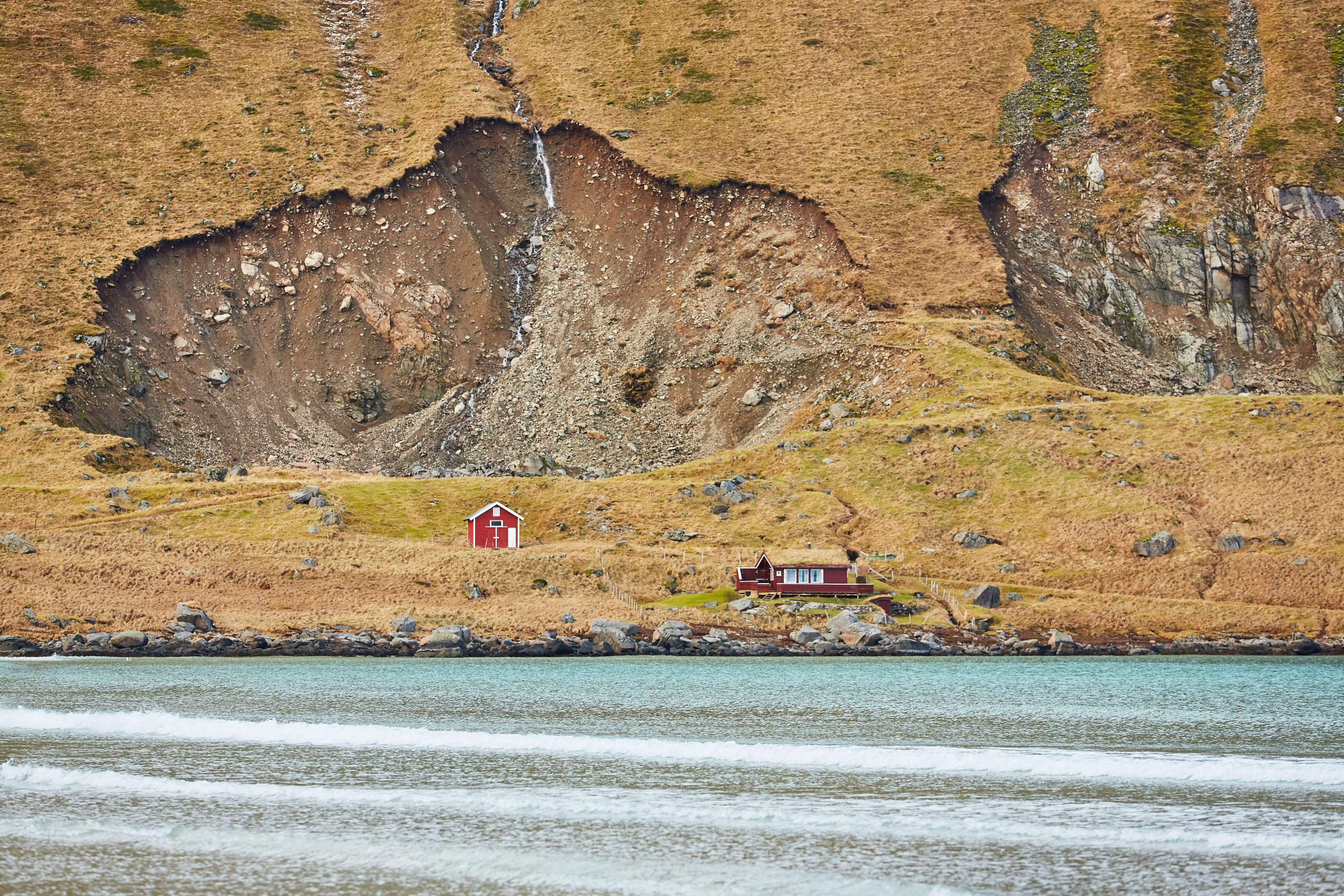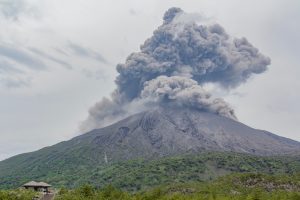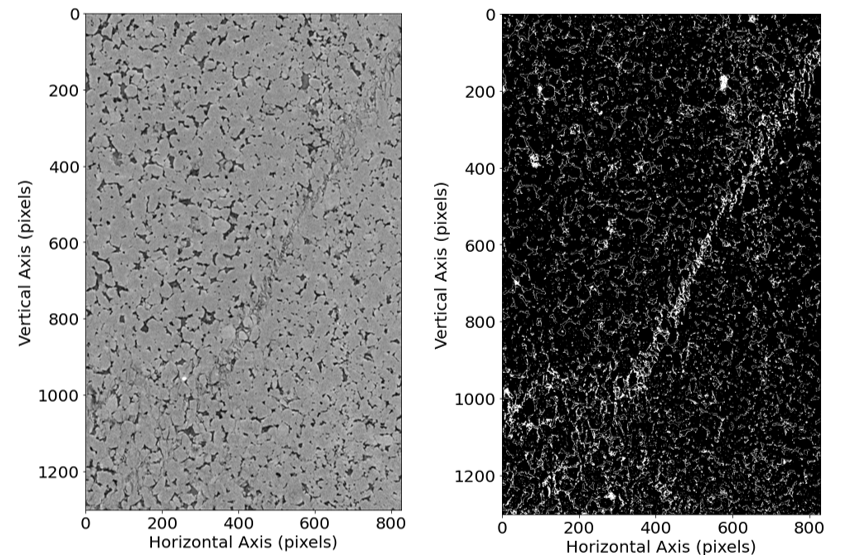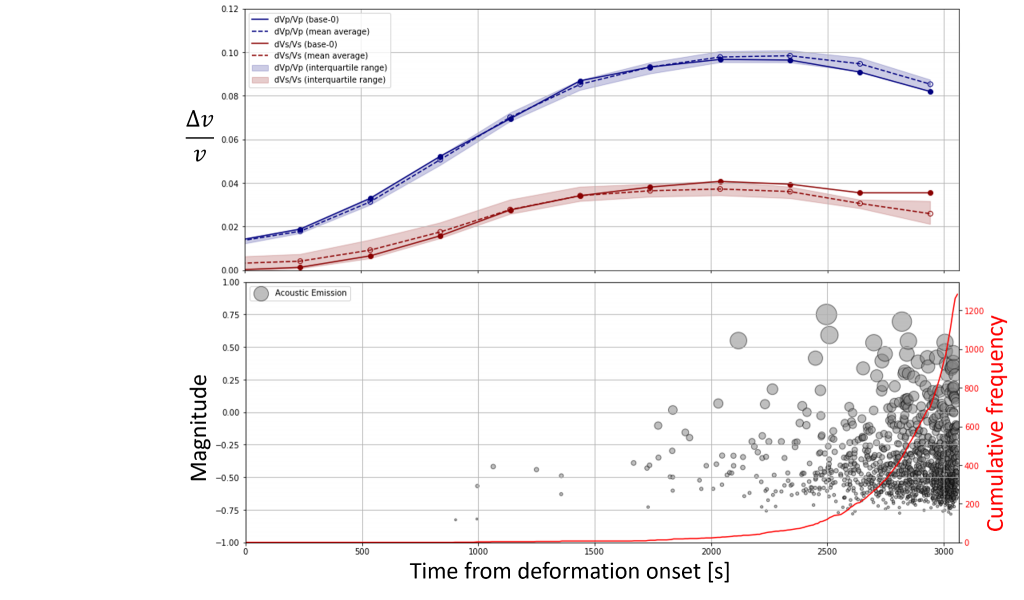Catastrophic failure… and success!

By Claudia Elijas Parra and Jack Andrew Smith
Our understanding of landslides, volcanic eruptions, as well as natural and man-made earthquakes, is all underpinned by the way rocks break – a process known as catastrophic failure. As a rock is put under pressure, little microcracks develop and link up to form a damage zone which evolves over time, ending in a loud bang when the whole sample breaks suddenly.

Photo by Mitsuo Komoriya on Unsplash
We want to know what goes on in the lead-up to catastrophic failure to help predict these natural hazards. How do we go about that? Scientists take teeny cylindrical rock samples (only a few centimetres long) and squish them using a machine called a deformation rig. They can either hear the rock breaking using acoustic sensors, or they can see the rock breaking using x-rays.
In 2017, researchers here at the University developed a deformation rig called Storr Mjölnir (named after Thor’s hammer) for the CATFAIL research project, and was the first that could both hear and see a rock breaking in the lab. That’s really cool because it provides a fuller picture of what’s going on, and can verify results derived from two completely different techniques.
Not only that, Storr Mjölnir can slow down the deformation so we can essentially watch it happen in slow-mo, and see things right up to the failure point that would normally happen too quickly for us to detect. In early 2021, we were looking for research-based internships for the summer, and got in contact with Prof Ian Main. He passed us on to Dr Maria-Daphne Mangriotis and Dr Alexis Cartwright-Taylor, who kindly invited us to do some work with the CATFAIL project.
The Seeing Part – Claudia
I got to develop a technique to automatically extract the fracture network from the x-ray images of the rock sample. This process is called segmentation because we are separating the pixels containing fractures from pixels containing no fractures (e.g. those containing solid rock and pore spaces).
I worked on this project for two consecutive summers. Throughout that time, I improved my computing skills because I was able to dedicate all my attention to the project since I didn’t have other courses on the side. It was also the first time undertaking a long project completely on my own that involved a topic that I hadn’t touched on during my degree.
This experience was good preparation for my dissertation project, helping me to be confident when facing a new scientific challenge, and developing plenty of computing resources and time management skills. I learnt a lot from my supervisors Alexis and Ian, not only about rock physics, but on how to find eloquent facts from data that seems speechless and squeeze data sets to death!
We took our results from my first summer internship to a scientific conference: Tectonic Studies Group (TSG) Annual Meeting 2022, in January. The most nerve-wracking part was answering the questions after the talk! It was a great opportunity to listen to other researchers working on the broad topic of rock physics.
The conference was held online due to Covid-19 restrictions. Nevertheless, TSG prepared a Gather space for the posters section, which was really fun to navigate, because it worked like a videogame, where you had an avatar and could move to different rooms and listen to different project talks. After the conference I received the BritRock Prize for best student presentation. This was very rewarding and motivated me to engage in research projects related to rock physics.

Data collected by Claudia during her internship and presented at TSG conference. On the left is an original x-ray image of a rock sample at the end of deformation. On the right, the fracture network of the rock at the end of deformation is shown in white (Elijas-Parra, et al., 2022).
The Hearing Part – Jack Andrew
I used a technique called ‘coda wave interferometry’ (Scrabble score 39) on recordings of seismic waves, which are like sound waves that travel through rock, to simultaneously find the velocity evolution of two wave types (compressional and shear) as the rock deformed. By simply listening to the rock breaking, we measured how its mechanical properties change during failure using a new technique that had never been done before on experimental data, only on simulations.
The first challenge was to write a proposal for funding from the College Vacation Scholarship, which provided the financial means for me to stay in Edinburgh for the project. I’d highly recommend anyone considering a research internship at the University to apply for a scholarship, as I learnt a great deal about how to effectively demonstrate the importance of my research in writing.
Another challenge was learning how to work within a research group. It took practice for me to not be demotivated by the volume of constructive critical feedback, but rather to appreciate the value of and incorporate insights from various areas of expertise. I also developed the confidence to air my ideas for solutions and interpretations to a group of very smart people!
My supervisor, Maria-Daphne, couldn’t have been more supportive and helped me every step of the way – our working relationship was a joy from start to finish (and she has continued to be of great help for my subsequent ventures!), which allowed me to understand how to most effectively work with a supervisor prior to starting my dissertation.
I presented the results from the hearing side of the project in September 2021 at the 14th Euroconference on Rock Physics and Rock Mechanics (catchy name). It was the first time I had had to present and take questions at a professional conference, so I was understandably nervous.
However, everyone was so friendly and the talks were all super interesting – I felt like a valuable part of a community and really enjoyed myself! The presentation went down a treat too – I was awarded an official commendation, and was gifted a fancy pair of binoculars from the conference sponsor Zeiss (which I mainly use to look at my dog from 6ft away).

Data collected by Jack Andrew during his internship and presented at the Euroconference on Rock Physics and Rock Mechanics. The graph shows the proportional change in velocity (top) and acoustic emissions from microcracking (bottom) during deformation (Smith, et al., 2021).
Study with us:
Claudia and Jack Andrew presented their data at the following conferences:
Elijas-Parra, C., Cartwright-Taylor, A., Main, I. G., Butler, I., Fusseis, F., Rizzo, R. E., Leung, D. D., Magdysyuk, O. V. (2022). Quantifying crack network evolution during deformation of a porous rock [presentation]. Tectonic Studies Group Annual Meeting, January 6th, online.
Smith, J. A., Mangriotis, M. D., Curtis, A., Cartwright-Taylor, A., Ando, E., Main, I. G., Bell, A., Butler, I., Ling, M., Fusseis, F., Rizzo, R. E., Marti, S., Leung, D., Singh, J., Magdysyuk, O. V. (2021). Seismic characterisation of rock failure in a dynamic loading experiment [presentation]. 14th Euroconference on Rock Physics and Rock Mechanics, August 30th, online.



